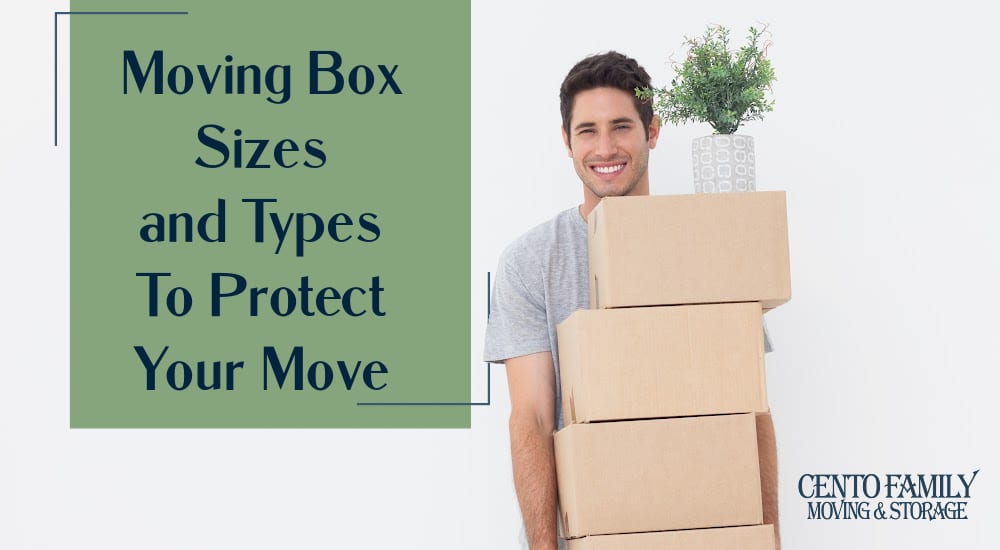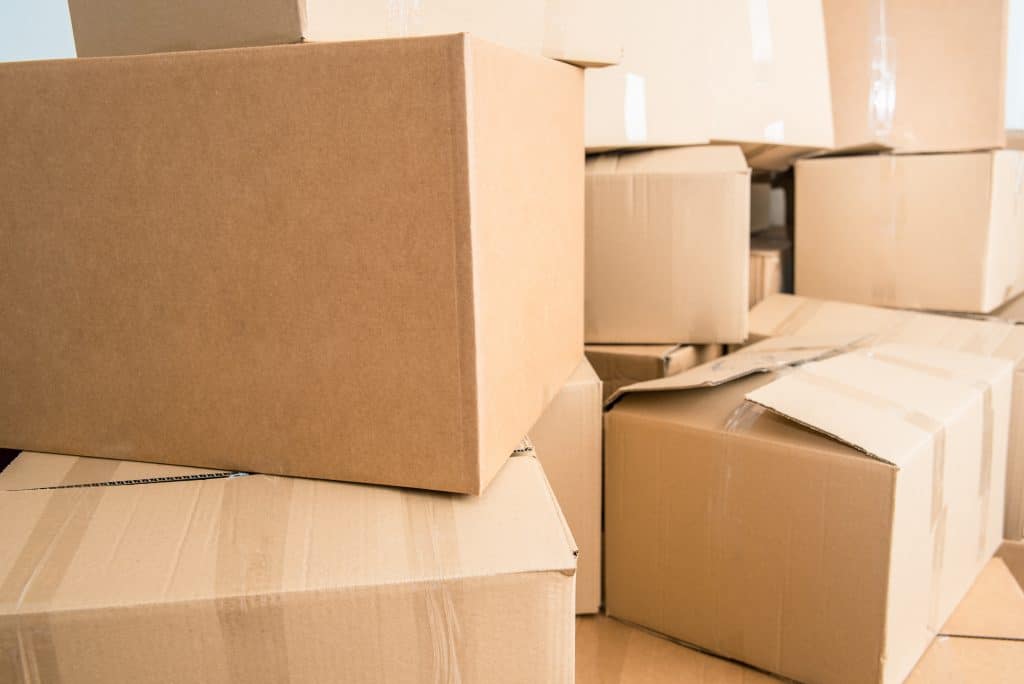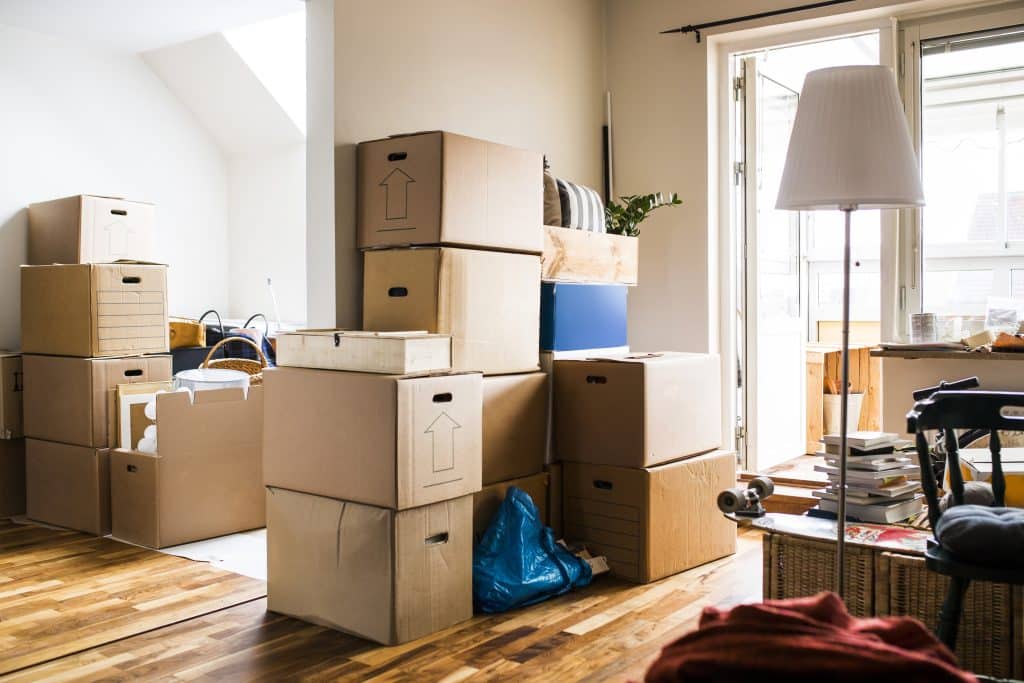Moving Box Sizes & Types To Protect Your Move

Moving day? You’ll need some boxes.
But just what moving box sizes will you need?
Are you moving soon? Relocating can be stressful as everything moves from one location to the next.
Knowing the different sizes and types of boxes available can help you avoid damaging items during transportation. Common problems such as misplaced items and broken, fragile wares can be almost completely avoided by carefully packaging items.
Choosing the correct size box that isn’t too big or too small for your items is helpful. And using the right type of box can make your next move simpler and easier than ever.
In this article, we’ll give you a breakdown of some of the most useful moving box sizes as well as some tips on how to pack them to prevent damage.
How Many Boxes Do You Need?
Figuring out how many boxes you need when you move can be a guessing game—and that’s okay. There are general guidelines you can follow that can help you make a realistic estimate of how many boxes you need.
Boxes Needed For a Typical Residential Home
A ballpark number for the average residential home is 60 boxes. You will want to get a mix of different sizes to make packing and unpacking easier.
For a home of 1,200 to 2,000 square feet, you need 30-40 small boxes or 25-45 medium boxes, plus 15-25 large boxes or 10-15 extra large boxes.
It’s common to underestimate how much stuff you have, so be generous when estimating how many boxes you need. If you are decluttering before packing up, you may need fewer boxes.
What to Use Besides Boxes
You can reduce the number of boxes you need by utilizing travel suitcases for certain items. You can add padding to secure the items inside to prevent them from shifting. However, sturdy cardboard boxes are one of the best safeguards for your items.
So, what about trash bags and open-top bags? Can they be substituted for cardboard boxes? They are fine to use in some situations, but sturdy boxes are the tried and true way to transport items.
Improper packaging increases the likelihood of your belongings being lost or damaged. There is some risk when using a trash bag or open-top bag because they are not designed to withstand the wear and tear of moving day. Trash bags can easily be ripped by the sharp corner of a box, so it doesn’t offer a high level of protection for items inside. Open-top bags cannot be guaranteed to protect your belongings since it does not close.
How Many Boxes For Each Room
A general guideline for each room is 15 medium to large boxes. Consider the dressers and cabinets in the room as well. Each drawer requires one small or medium container for its contents.
Remember: If you are unsure about how many boxes, it is always better to overestimate the number of boxes so that you don’t run out halfway through the move.
Types of Moving Boxes
There are lots of features to look for in a moving box (other than “six sides and a lid”). Here are some of the things to consider when selecting your boxes.
Picking Sturdy Moving Boxes
Are your boxes adequate for moving your belongings? Moving boxes should be thick cardboard with sturdy construction, but they don’t have to be as thick as shipping boxes. The box should be large enough to hold your items but not so large that it is difficult to transport. Boxes with handles are also helpful.
- Look for boxes that are made of thick cardboard.
- Avoid boxes that have already been used for moving purposes (weak boxes are likely to collapse).
- Look for boxes that are slightly larger than the items you are trying to move, as this leaves room for padding.
- Make sure that the boxes you select can be securely closed.
Some people prefer to use plastic bins for enhanced durability over cardboard boxes. However, plastic bins can be more expensive and more difficult to transport. Ultimately, it is up to the individual to decide what type of container works best for them.
Standard Moving Boxes in Small, Medium, Large, X-large
There are four standard box sizes—small, medium, large and extra large.
Small moving boxes are suitable for packing smaller items such as books, clothes, and dishes. Medium moving boxes are ideal for packing larger items such as kitchen pots and pans, games, and shoes. Large moving boxes are suitable for packing lighter-weight but bulky items such as sheets and bedding. Extra large moving boxes are ideal for packing things like lampshades and bulky clothing.
Wardrobe Boxes
There are several uses for wardrobe moving boxes. Wardrobe boxes protect your clothes during a move and are larger than standard boxes to hold more clothes. They also have a bar across the top of the box to hang your clothes.
You can also use wardrobe boxes for lightweight items like pillows or comforters. Wardrobe boxes are even ideal for fitting lamps and furniture stools inside.
Picture Boxes
Picture frame moving boxes are designed to keep glass picture frames safe during the hustle and bustle of moving day. You can use picture frame boxes with foam inserts that cradle the glass frame corners and protect the piece from bumps and scratches.
Dish Barrel Boxes
Dish barrel boxes are designed to keep extra fragile items safe such as dishes, glasses, and plates. They are double-walled cardboard boxes to withstand transportation. You can use them in conjunction with inner dividers and compartments to separate fragile wares.
Moving Box Sizes
You’ll want to get various box sizes as they serve different purposes. A small box is suitable for packing books, while a larger box is better for clothing.
Types of boxes, sizes in cubic measurements, and length, width, and height:
- Small box: 1.5 cubic feet – 16-3/8″ x 12-5/8″ x 12-5/8″
- Medium box: 3 cubic feet – 18 1/8” x 18” x 16”
- Large box: 4.5 cubic feet – 18″ x 18″ x 24″
- Extra large box: 6 cubic feet – 24″ x 18″ x 24″
- Wardrobe box: 9.5 to 18 cubic feet – 24” x 20” x 34” (Short) 24” x 21” x 48” (Regular) 24” x 24” x 48” (Large)
- Picture frame and mirror box: 2.3 cubic feet – 37” x 4” x 27” (Fit two boxes together for 58-1/2” x 37-1/2” x 4 dimensions)
- Dish Barrel box: 5.25 cubic feet – 18” x 18” x 28”
Generally, all moving boxes have a maximum weight capacity of 50 pounds. If you are not strong enough to lift 50-lb. boxes, you will need to use smaller boxes to be able to lift them without damage.
Bonus Packing Tips
- Use smaller boxes for heavier items and larger boxes for lighter items.
- Fill each box to the brim, but not so full that it’s too heavy to lift.
- Use packing paper, bubble wrap, foam peanuts, or even old linens to fill empty spaces and prevent items from shifting during transport. This is very important to avoid damage to the items inside the box!
- Label each box with its contents and the room it’s going in. This will make unpacking a breeze.
- Hire a professional packing company. The time and stress you save are often worth the cost.
Moving is Easy With Cento Moving and Storage
You are well on your way to packing up and leaving your old home. You can make moving day easier and less stressful with the help of professional movers.
Cento Moving and Storage in Central Florida can help transport your belongings carefully and efficiently—local or long-distance.
We move residential and commercial buildings—big or small. Cento Movers are licensed, professional, and have full transparency during the entire moving process. Contact us for a free quote so that we can show you how easy moving can be.
Recent Posts
- Commercial Office Design Trends For 2024 June 27, 2024
- Guide to Office Furniture Disposal June 17, 2024
- 10 Summer Moving Tips May 16, 2024










